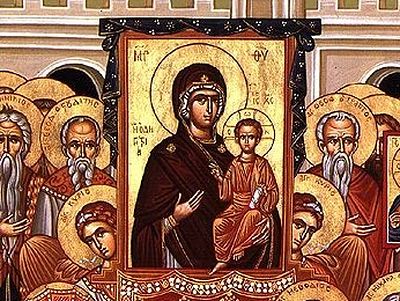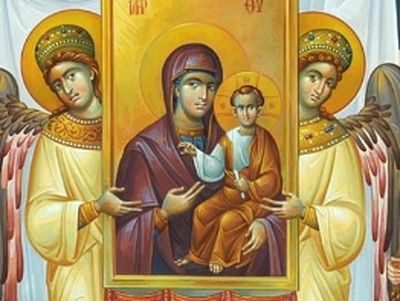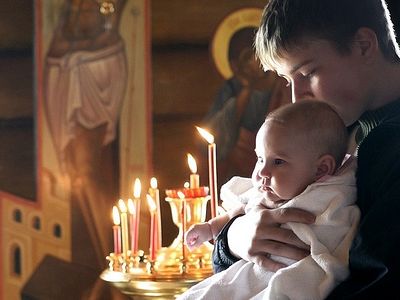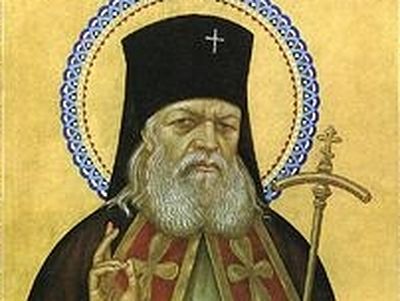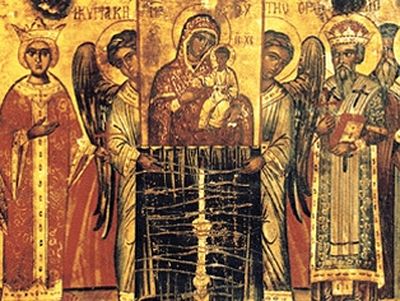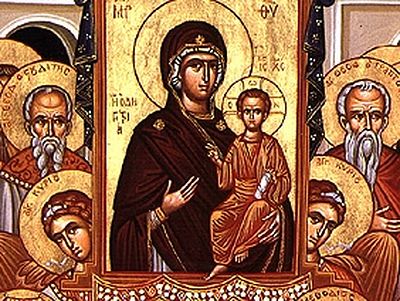Source: saintjohnmission.org
Today, on the first Sunday of Lent, we commemorate the Triumph of Orthodoxy. On this day we bring icons to church and carry them in procession to celebrate the restoration of the icons after the iconoclast heresy long ago. But even though the icons are highly visible, the Triumph of Orthodoxy does not only mean we can have icons.
There’s a subtext to iconoclasm that we miss because we aren’t ancient Greeks or Romans. Saint Paul writes that “Christ crucified [is] to the Jews a stumbling block and to the Greeks foolishness” (1 Corinthians 1:23). The philosophy of the Greeks emphasized the transcendence of God: The high, exalted, remote Deity, they believed, could not be associated with the grossness of the flesh. To them, spirit was good; matter was bad — and man was a divine spirit trapped in a lowly material world, unless he can escape through secret knowledge.
In the face of that belief, the first Christians proclaimed that God has become a perfectly material, fully physical human being; that he actually died; and not only did he rise bodily from the dead, He promises to raise us for eternity in bodies. Salvation doesn’t lie in an escape from matter. Instead Christians expect to live eternally, bodily, in the Resurrection.
Although this pagan Greek disdain for matter and the body was alien to the Christian Gospel, it remained alive in heresies around the periphery of the Church. Finally, in the eighth century, in the wake of Islam’s impact on Christian culture, this delusion reared its head among the Christians.
The iconoclasts [literally, image-breakers] asserted that since “God is spirit” (John 4:24), then Hecannot be depicted using matter. Since (they said) an icon can only show the humanity of Christ, not His invisible divine nature, they claimed icons of Christ improperly divided Jesus the man from Christ our God. And, scandalized by Christian veneration of icons, the iconoclasts called it the same asworship of pagan idols. When they gained the ear of the emperor, they arranged to have the Archbishop of Constantinople replaced by one of their own, and began persecuting the Orthodox who venerated images, even putting them to death.
The history of the present feast is that of the restoration of icons to the Church. In answering the iconoclasts’ objections, the holy Fathers remind us that the holy, transcendent God has become a Man; “He humbled Himself and became obedient to the point of death, even the death of the cross” (Philippians 2:8). He saves us by participating fully in our visible, material nature — uniting it to Himself in His triumph over death, in His ascension and return to His own divine glory and throne, in His eternal life, divine nature, holiness and righteousness. Saint Gregory the Theologian famously says, “That which was not assumed is not healed; but that which is united to God is saved.”
Christ can be depicted in matter — in paint on wood, in mosaics in stone, on metal bells and vessels — precisely because ever since Gabriel’s annunciation, “Hail, full of grace,” God the Word is forevermore a material, human Person. He saves us on an entirely material Cross of wood, shedding real blood; He heals and sanctifies us with oil, water, the bodies of the saints, and above all with His own Body and Blood.
God is Spirit, and Christ our God is also human. He is impassible — but in His incarnation, He’s no stranger to pain or tribulation. In Him the human and divine natures are united “without mingling, change, division, or separation,” as the Fathers have said. In the light of this fearful divine Mystery, no Orthodox Christian is tempted to worship the mere wood or paint of an icon: as Saint Basil wrote, when we venerate Christ or the saints in an icon, the honor we show passes on to the one the image represents.
Jesus Christ is the God who gets His hands dirty. That still scandalizes people who prefer a deity they can keep on a pedestal. We live in a culture that — like the ancient Greeks — prefers to be merely a fanof an impersonal god that we can compartmentalize, ignore, and salute when appropriate. The message of the restoration of the icons is that this conveniently uninvolved deity of civil religion is afalse god. Ironically, the god that cannot be depicted in images is an idol invented by the minds of men. But the living God – the I AM whose bodily resurrection we will celebrate in a few weeks, is “that which was from the beginning, which we have heard, which we have seen with our eyes, which we have looked upon, and our hands have handled” (1 John 1:1) This God, who saves the world by His material Incarnation, is fittingly depicted using matter. This is the Orthodoxy that triumphs today.


